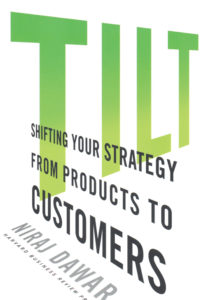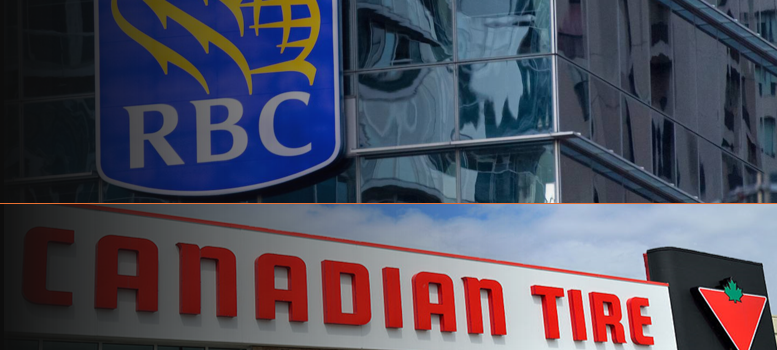 By Stephen Shaw
By Stephen Shaw
Niraj Dawar is a professor emeritus, marketing, at Ivey Business School, University of Western Ontario, which is one of the premier business schools in the world. He is the author of the book Tilt: Shifting Your Strategy from Products to Customers.
Most marketing leaders say that driving business growth is their top priority. Judgement of their performance ultimately comes down to one measure: the year-over-year increase in brand sales. And as much as marketers acknowledge that customer experience has become the main brand differentiator, they are still mainly driven to sell more stuff to more people. Which is why marketers remain consumed with brand messaging.
Today, marketers are forced to spread their ad dollars across an ever-expanding mix of media, hoping to catch customers at exactly the right moment. But audience attention is scarce, measured in seconds, not minutes. So how do marketers get off the media merry-go-round? What should their true role be? And how, in fact, do they become more customer-centric when businesses are still organized around brands and products?

Niraj Dawar, Ivey Business School
In his book Tilt: Shifting Your Strategy from Products to Customers, Professor Dawar argues that “marketing, as a discipline, has been in a funk since the demise of mass marketing clipped its ability to move large numbers of customers to buy”. He sees today’s marketers as technicians “who understand data but not strategy”. He argues that product innovation is not enough; it only results in incessant leapfrogging. His advice: marketing must go from asking, “How much more of this stuff can we sell?” to “What else do our customers need?”
Marketing’s new role, Professor Dawar suggests, should be to “take charge of the entire customer relationship”. Marketing needs to give up its channel-based strategic planning processes in favour of delivering value at every stage of the relationship. Instead of “playing a game of R&D roulette”, as he puts it, marketers need to figure out which customer problems their brands are best positioned to solve.
Q: You make the case in your book that competitive advantage today primarily comes from what you call “downstream” activities versus “upstream”. What do you mean?
A: Upstream activities include sourcing of raw materials, operating the factory, production and distribution and product design and development. Downstream activities include anything related to customer relationship management.
Q: What accounts for this shift you describe, from upstream to downstream?
A: There are actually three shifts. The first is related to costs. Companies used to have huge investments in their factories. The imperative was to drive as much volume as possible. But today companies can outsource production to third parties, where fixed costs become variable costs, and they pay only for what they actually purchase. Or they can automate production to minimize operational costs.
 The second big shift is that consumers don’t mind paying for value. They are willing to pay a premium for value-added benefits.
The second big shift is that consumers don’t mind paying for value. They are willing to pay a premium for value-added benefits.
The third is the shift in competitive advantage. It used to be that large-scale production, or patents or new product features were the key to sustainable advantage. Today, the sources of competitive advantage are in the downstream. If tomorrow Coca-Cola’s factories, its machinery and its fleet of trucks were all to go up in flames, Coca-Cola could probably obtain financing to start operations again tomorrow.
Q: Just on the strength of its brand.
A: And that brand equity only resides in the minds of consumers. It’s a downstream asset. For Coca-Cola, that asset was built over decades. Yet most businesses remain structured around the upstream.
Q: Product marketing still rules the enterprise.
A: Absolutely. Everything is product- and volume- driven. So, if we organize ourselves around the customer, the first question we need to ask is, why do our customers buy from us rather than from our competitors? Why are they coming to us? And the answers tend to be things like reputation, trust and ease of doing business.
Q: The inverse might be equally interesting to explore: why aren’t they buying from us?
A: Yes. And why are they buying from our competitors? And the answers are the same: trust, ease of doing business and reputation.
But our managers are still managing for the upstream. The result is a disconnect, where managers remain focused on volume measures, such as market share, in order to define success, rather than looking at things like share of wallet with customers, depth of engagement or loyalty. Customer centricity involves understanding customer needs and making sure that the customer remains the focus of activities that add value and provide competitive advantage.
How to put customers first
Q: Traditionally, marketing has been fixated on measures of attention more than anything. They still have a media mindset. Putting customers first means challenging the very organizational structure and purpose of the enterprise. How does marketing make that pivot?
A: Let’s consider an example: a construction chemical manufacturer called MasterBuilders [now owned by BASF]. They sell to construction companies which might operate hundreds of construction sites at a given time.
The chemical products they sell are a commodity, and therefore price sensitive. Their products are also an additive chemical, rather than a principal chemical. They account for less than 3% of the concrete mix made at the construction site. So they are treated as an afterthought in the purchase process.
However, if those chemicals are missing from that concrete mix, the entire mixer must stop. And if the mixer stops, then the construction site comes to a halt. And if that happens, it can cost up to $250,000 a day. The result is that there’s a high risk associated with not the product—not the usage of the product—but with the inventory of the product.
Q: In the timely supply of that product.
A: Yes, in delivering the product to the construction sites. What MasterBuilders does is it constructs storage silos at every single construction site. It monitors those silos to make sure that the inventory levels are always full, and it makes sure it provides a guarantee to customers that they will always have the additives when they need them. So they will never run out, they will never have to stop the mixers and they will never have to stop the construction sites because of a lack of additives.
And now MasterBuilders can plan the delivery routes to minimize the cost of delivery. Whereas before construction site managers were calling MasterBuilders, saying, “Look, we need these additives on an emergency basis. We forgot to order because they were an afterthought”. The result was you had half-load trucks being shipped out at a very high cost and the shipping costs sometimes exceeded the price charged for the chemicals.
Now you have planned routes, you have automatic monitoring of inventory and you can guarantee the construction site managers that they’ll never run out. It reduces the risk, it reduces stress and it provides value to the customer that you can’t necessarily provide by selling a better chemical.
The overall lesson from the story: don’t just look at what you sell. Look at how customers buy and use your product.
Q: Look at what customers need after the sale is made.
A: Exactly right. And what that does is it suddenly turns a commodity into a highly differentiated product that the customer is willing to pay for. What’s most important is to own the customer relationship. And then you ask, what else does this customer need? It doesn’t matter whether you make what the customer needs. It doesn’t matter whether you have a factory producing that product. All of that is secondary to the fact that you own the relationship with that customer. What the products must do, however, is fit into the customer’s perception of you as a supplier. In other words, the reputation you have with the customer should be consistent with the products you’re selling them.
Q: I guess a good example is probably Amazon, which started out as a bookseller, but is now an infinity aisle for people: a one-stop source of every imaginable product you can buy.
A: Amazon is a great example of that. And I think it’s important to remember that when Amazon started, they weren’t just selling better books: they were selling books better. The ability to sell things better is transferable across product categories. The common element is a reduction in the customer’s costs and risks of buying.
Which drives which?
Q: Given the importance of brand trust and reputation, does the brand today drive the direction of a business? Or does the direction of the business drive the brand?
A: That’s a great question. In the upstream world, your product range was determined by what your machines could make. And so, you might ask, “What else can we make, given our infrastructure, given our factories?”
Today, the customer may expect not just a physical product, but financing options, insurance and all sorts of ancillary products and services which you don’t necessarily make, but you can supply as add-ons. And so the question of product range is now very much downstream driven. Once the brand has that relationship with the customer, the logical question is what else does this customer need and what will this customer accept from our brand?
The marketing funk
Q: In your book you state that marketing as a discipline is in a funk. If businesses have to make this shift to the downstream model you’re describing, how do you see marketing evolving?
A: When marketers think of innovation, they think of better products. They think of better features. They rarely think in terms of better customer interactions. And so we don’t have customer-related metrics or incentives.
Let me give you an example. If you’re selling automobiles, and a car buyer comes in and makes a purchase, you’ll know exactly what the margin on that car is. Yet we know relatively little about the value of the person who purchased the car. How profitable is their household? How many other people in that household could we sell to? How many more cars are they likely to buy over their lifetimes?
VAs as new intermediaries
Q: On the subject of selling, in your Harvard Business Review article, “Marketing in the Age of Alexa”, you make the compelling case that voice assistant (VA) platforms could be the ultimate adjudicator over consumer choice, particularly low-risk replenishment decisions: “Alexa, what’s the best cold remedy I should use?” Where does that leave brand-building?
A: If you remember at the dawn of the Internet era, the promise was disintermediation. And here we are, 25 years later, and the most powerful players on the Internet are, in fact, intermediaries. Those intermediaries control access to consumers.
And as the Internet becomes the primary interface for consumers, those interfaces are going to become very dominant, Alexa being one of them. And that will happen because the consumer gets two things out of Alexa.
The first is to automate everything that is routine. Consumers purchase about 300 products on a regular basis: shampoo, dishwashing liquid, pet food, cat litter, that sort of thing. Those products are time-consuming to purchase. Imagine if Alexa learns the regularity at which you purchase and use those products, and then delivers them to your doorstep, just as you currently get electricity and water on a subscription basis?
The second is to cut through the complexity of the marketplace. Take the example of a phone plan: with so many options and features to consider, are you really sure you have the right one?
Those are complex decisions that are not easy to make for most consumers. Machines like Alexa can help consumers simplify the decision process. And there won’t be more than two artificial intelligence (AI) interfaces in the market because they’re very expensive to build and maintain. [Also] once the consumer gets used to a particular AI platform, they’re unlikely to switch because a lot of the convenience depends on how much data the platform has about them, their past purchases and so on.
Future for brands
Q: Is the future for brands to own a niche segment of the population? This goes right back to what you were talking about at the beginning: know the customer so intimately you can compete against Amazon, using its scale against it.
A: Like specialized platforms do. For example, Expedia for travel or Uber for transportation and delivery versus general platforms such as Google Home or Alexa, which saves customers time and money. Again, I believe the customer quest for convenience trumps all. I believe the customer will opt for the general platform, and that it’ll be very difficult for specialized platforms to compete.
Q: In that case, brands will be at the mercy of just a few intermediaries.
A: Yes, brands will have to find a way to pay for access to customers. But brands face yet another threat: these same intermediaries have developed their own private labels. And that gives them preferential access to the consumer. So, they can offer a 20% discount on the private label relative to a branded product at exactly the moment of truth. Brands won’t have that advantage.
Q: Which explains the interest of brands in developing their own first-party data. On the subject of data, you also wrote an article in HBR on big data where you argued that marketers are failing to use it for customer insight.
A: And to create customer value. Right now, marketers are primarily using big data to target customers.
Q: Do you think the strategic play for marketers going forward is to establish an emotional brand connection with customers based on social value?
A: Yes. But in today’s world, where it’s very difficult to get to the end-consumer without going through the intermediaries, it’s necessary to maintain that emotional connection over time. It is tricky because it requires brands to be very, very tuned in to social values. Otherwise it can very easily backfire.
Q: The accelerating rate of change over the next few years is going to be convulsive. Five years from now, when you’re teaching your course, what are you going to be teaching? Because all the old marketing textbooks will be irrelevant.
A: Remember, the customer remains at the centre. You always come back to that. You begin with the customer. How does the customer define value? How does customer value creation turn into sustainable competitive advantage?
Stephen Shaw is the chief strategy officer of Kenna, a marketing solutions provider specializing in delivering more unified customer experiences. He is also the host of a monthly podcast called Customer First Thinking. Stephen can be reached via e-mail at sshaw@kenna.ca.




